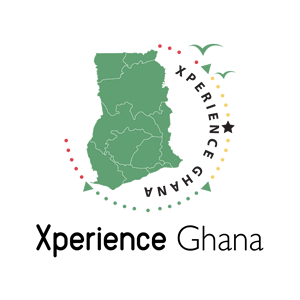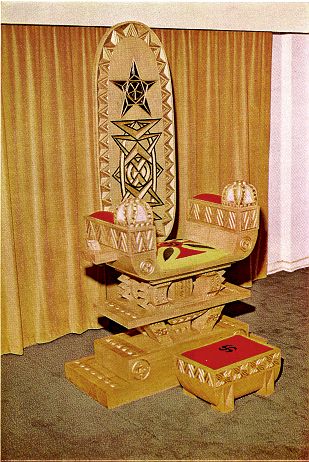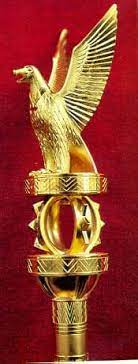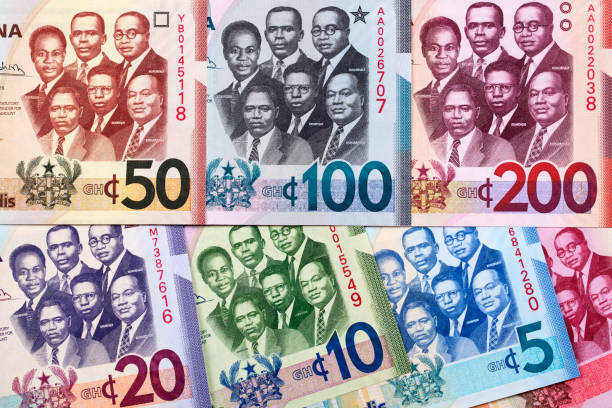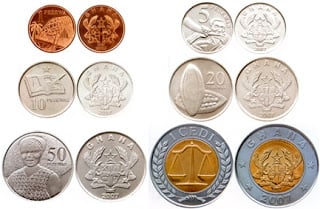Ghana’s national symbol are depictions that reveals Ghana to the world as a national community. The purpose is to unify the Ghanaian people through creative channels such as visual, verbal and iconic symbolism of the Ghanaian community. Ghanaian symbols enhance nationalism and are sometimes celebrated by the people. The following are some national symbols that represents Ghana:
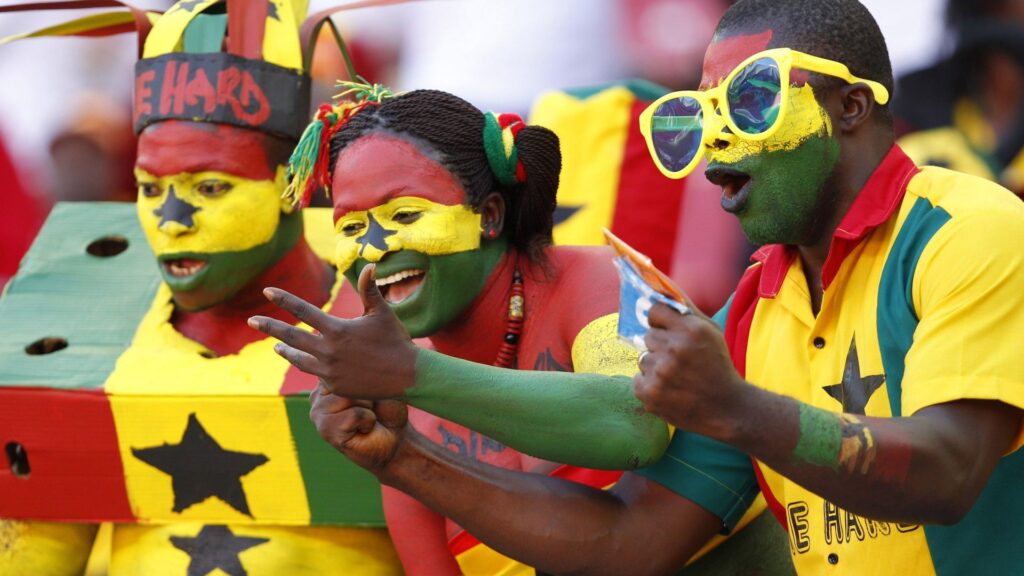
- Ghana’s Coat of Arms: The idea of a national coat of arms for Ghana was first realized by Queen Elizabeth II but was designed by a Ghanaian artiste Nii Amon Kotei on 4th March, 1957. Ghana’s coat of arms is seen on all government official letterheads. It symbolizes government official authorization and is also located at important government places like the castle, the courts and other governmental institutions.
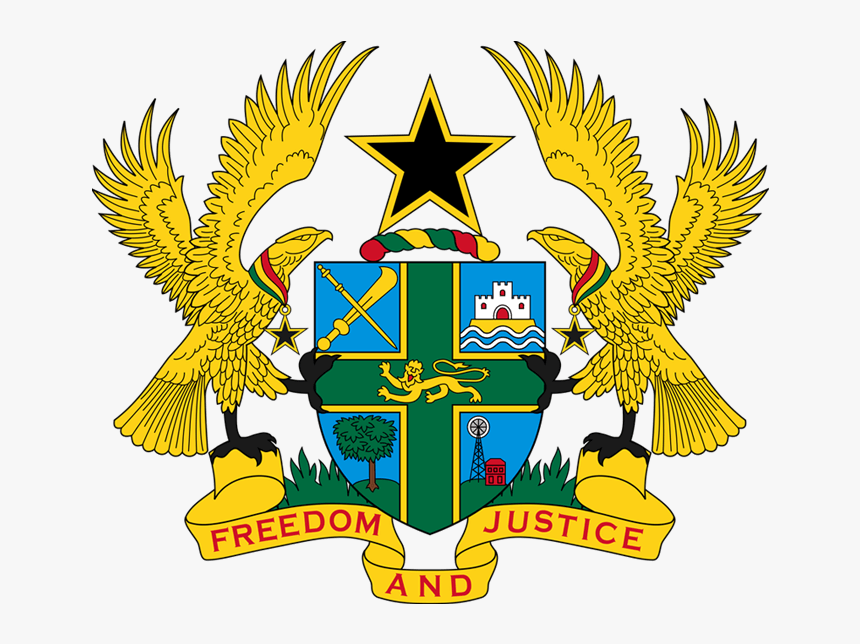
The coat of arms is made up of some important elements such as:
A shield divided into four quarters by a green St. George’s Cross, rimmed with gold.
- A crossed linguist staff and ceremonial sword on a blue background is located at the top left-hand quarter and it represents our Local Governance system.
- A heraldic castle on a heraldic sea with a light blue background is located at the top right-hand quarter and it represents our National Government.
- A cocoa tree positioned at the bottom left-hand quarter represents our agricultural wealth as a nation.
- A mine shaft positioned at the bottom right-hand quarter represents our mineral wealth as a nation.
- A Gold Lion is position in the centre of the green St. George’s Cross which represents the continued link between Ghana and the Commonwealth.
- A black five-pointed star rimmed with gold standing on the wreath of red, gold and green colours surmounting on top of the shield which represents the lodestar of African Freedom.
- Two Eagles, around each of whose neck hangs a black star suspended from a ribbon of Ghana colours – red, gold and green supporting the shield.
- The motto “FREEDOM AND JUSTICE” are found under the shield.
The Shield signifies a protector with strength, very clear and attentive eyes keeping watch over the country.
2. The Ghana National Flag: Designed by an industrious and artistic Ghanaian, Mrs. T. S Okoh, the Ghana National Flag was to substitute the flag of the United Kingdom upon the achievement of independence in 1957. The flag of Ghana consists of the colours red, gold and green in horizontal stripes with a five-pointed black star in the centre of the gold stripe.

- Red represents the blood of those who died in the country’s struggle for independence.
- Gold represents the mineral wealth of the country.
- Green symbolizes the country’s rich forests.
- The Black Star stands for the lodestar of African Freedom.
3. Ghana’s Presidential Seats and the State Sword: The pursuit of Dr. Kwame Nkrumah’s African Personality concept after independence made it possible for Kofi Antubam to create the Presidential Seats and the State Sword for the political authority of Ghana. The Presidential Seats and the State Sword of Ghana are not just artistic pieces but cultural symbolism of the total being of the Ghanaian people. Kofi Antubam with the help of some local carvers took a year to design and make the Presidential Seats and the State Sword.
It included one “Asεsεgua” (Stool), which is the Seat of State; now generally referred to as the Presidential Seat. The other two are the “Asipim” chairs which are the Chair of State and the present Vice-President’s Chair. Antubam also worked on the State Sword, “Afena-nta” which till today is used for the swearing-in of The President of the Republic of Ghana.
4. PARLIAMENTATRY MACE OF GHANA: The day-to-day operations of the legislative arm of government are commenced with the procession of the Parliamentary Mace by the Marshall of the House which signifies ceremonial opening of each sitting in parliament. The Parliamentary Mace symbolizes the authority of Parliament. The current Parliamentary Mace was designed during Ghana’s first republic in 1960. The upright position of the Parliamentary Mace in the House can be compared to the staff of a linguist; it also gives importance to the head of the Parliamentary Mace which is the eagle.
The shaft of the Parliamentary Mace has six traditional stools representing the common sharing of responsibility, the presence of God in the society, lasting personality, prosperity, and presence and effect of feminine power in the society and pride. The Adinkra symbols embossed between the stools denote the Omnipotence of God, critical examination, strength, immortality and justice.
5. THE GHANAIAN CURRENCY: The Ghana Cedi and Pesewa are the element of currency of Ghana. They are the fourth historical and only existing legal tender in the Republic of Ghana. The name “Cedi” was adopted from the word “sedie” meaning cowrie, a shell money which gained acceptance and broader rotation in the late 19th Century.
The “Pesewa” signified the minimum denomination or quantity of the gold-dust currency rule. The name was to replace the British Colonial penny. Since 1965 till date there have being various cedi and pesewa denominations issued in the country but currently, we have GH¢ 1, GH¢ 2, GH¢ 5, GH¢ 10, GH¢ 20, GH¢ 50 and the newly introduced GH¢ 100 and GH¢ 200 notes in complementary with 5Gp, 10Gp, 20Gp, 50Gp, GH¢ 1 and GH¢ 2 coins.
